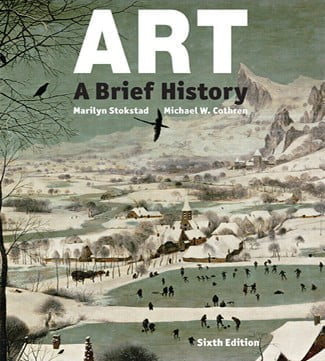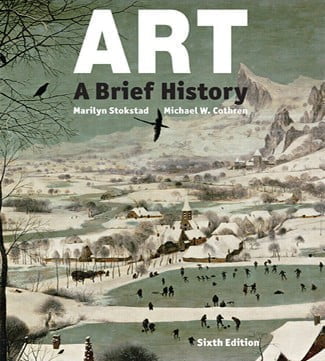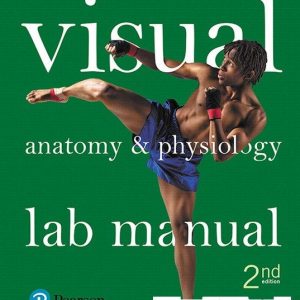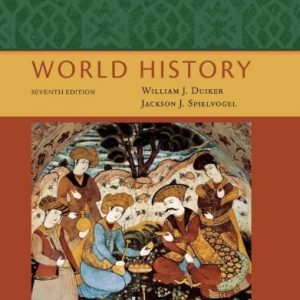Instant download Art A Brief History 6th Edition Stokstad Cothren Test Bank pdf docx epub after payment.

Multiple-Choice Questions
- In Egypt, the rule by one family is known as
- a kingdom.
- an empire.
- a dynasty.
- a tribe.
Question Title: TB_03_01_Chapter Introduction_Remember_3.1
Answer: c
Learning Objective: 3.1 Define the pictorial and architectural conventions developed during the Early Dynastic and Old Kingdom periods in ancient Egyptian art.
Topic: Chapter Introduction, Early Dynastic and Old Kingdom Egypt (c. 2950–2150 BCE)
Skill Level: Remember the Facts
Difficulty Level: Easy
- Why is Upper Egypt in the south and Lower Egypt in the north?
- The Nile River floods in the south.
- The Nile River floods in the north.
- The Nile River flows from north to south.
- The Nile River flows from south to north.
Question Title: TB_03_02_Early Dynastic and Old Kingdom Egypt_Understand_3.1
Answer: d
Learning Objective: 3.1 Define the pictorial and architectural conventions developed during the Early Dynastic and Old Kingdom periods in ancient Egyptian art.
Topic: Early Dynastic and Old Kingdom Egypt (c. 2950–2150 BCE)
Skill Level: Understand the Concepts
Difficulty Level: Moderate
- Who unified Upper and Lower Egypt into one empire?
- Khafre
- Hatshepsut
- Akhenaten
- Narmer
Question Title: TB_03_03_Early Dynastic and Old Kingdom Egypt_Remember_3.1
Answer: d
Learning Objective: 3.1 Define the pictorial and architectural conventions developed during the Early Dynastic and Old Kingdom periods in ancient Egyptian art.
Topic: Early Dynastic and Old Kingdom Egypt (c. 2950–2150 BCE)
Skill Level: Remember the Facts
Difficulty Level: Easy
- Which was the function of the Palette of Narmer?
- a breastplate
- a shield
- a place to grind paint for eye makeup
- a stele to honor the king
Question Title: TB_03_04_Early Dynastic and Old Kingdom Egypt_Understand_3.1
Answer: c
Learning Objective: 3.1 Define the pictorial and architectural conventions developed during the Early Dynastic and Old Kingdom periods in ancient Egyptian art.
Topic: Early Dynastic and Old Kingdom Egypt (c. 2950–2150 BCE)
Skill Level: Understand the Concepts
Difficulty Level: Moderate
- The Egyptian convention of depicting shoulders and torso in a frontal manner and hips, legs, and feet in profile was used
- when depicting slaves.
- when depicting priests.
- when depicting royalty.
- when depicting commoners.
Question Title: TB_03_05_Early Dynastic and Old Kingdom Egypt_Understand_3.1
Answer: c
Learning Objective: 3.1 Define the pictorial and architectural conventions developed during the Early Dynastic and Old Kingdom periods in ancient Egyptian art.
Topic: Early Dynastic and Old Kingdom Egypt (c. 2950–2150 BCE)
Skill Level: Understand the Concepts
Difficulty Level: Moderate
- In Egypt, which of the following would be portrayed most naturalistically?
- a king
- a military leader
- a queen
- a person of lesser social rank
Question Title: TB_03_06_Early Dynastic and Old Kingdom Egypt_Understand_3.1
Answer: d
Learning Objective: 3.1 Define the pictorial and architectural conventions developed during the Early Dynastic and Old Kingdom periods in ancient Egyptian art.
Topic: Early Dynastic and Old Kingdom Egypt (c. 2950–2150 BCE)
Skill Level: Understand the Concepts
Difficulty Level: Moderate
- Which is a city of the dead?
- mastaba
- sarcophagus
- necropolis
- mausoleum
Question Title: TB_03_07_Early Dynastic and Old Kingdom Egypt_Remember_3.1
Answer: c
Learning Objective: 3.1 Define the pictorial and architectural conventions developed during the Early Dynastic and Old Kingdom periods in ancient Egyptian art.
Topic: Early Dynastic and Old Kingdom Egypt (c. 2950–2150 BCE)
Skill Level: Remember the Facts
Difficulty Level: Easy
- Who designed the funerary complex and stepped pyramid of Djoser?
- Djoser
- Imhotep
- Menkaure
- Menes
Question Title: TB_03_08_Early Dynastic and Old Kingdom Egypt_Remember_3.1
Answer: b
Learning Objective: 3.1 Define the pictorial and architectural conventions developed during the Early Dynastic and Old Kingdom periods in ancient Egyptian art.
Topic: Early Dynastic and Old Kingdom Egypt (c. 2950–2150 BCE)
Skill Level: Remember the Facts
Difficulty Level: Easy
- Which Third Dynasty king is buried at Saqqara?
- Senusret III
- Djoser
- Ramses II
- Hatshepsut
Question Title: TB_03_9_Early Dynastic and Old Kingdom Egypt_Remember_3.1
Answer: b
Learning Objective: 3.1 Define the pictorial and architectural conventions developed during the Early Dynastic and Old Kingdom periods in ancient Egyptian art.
Topic: Early Dynastic and Old Kingdom Egypt (c. 2950–2150 BCE)
Skill Level: Remember the Facts
Difficulty Level: Easy
- The oldest and largest of the Giza pyramids is that of
- Djoser.
- Khafre.
- Khufu.
- Menkaure.
Question Title: TB_03_10_Early Dynastic and Old Kingdom Egypt_Remember_3.1
Answer: c
Learning Objective: 3.1 Define the pictorial and architectural conventions developed during the Early Dynastic and Old Kingdom periods in ancient Egyptian art.
Topic: Early Dynastic and Old Kingdom Egypt (c. 2950–2150 BCE)
Skill Level: Remember the Facts
Difficulty Level: Easy
- In the Egyptian religion, who was the falcon-headed god?
- Thoth
- Ammit
- Anubis
- Horus
Question Title: TB_03_11_Early Dynastic and Old Kingdom Egypt_Remember_3.1
Answer: d
Learning Objective: 3.1 Define the pictorial and architectural conventions developed during the Early Dynastic and Old Kingdom periods in ancient Egyptian art.
Topic: Early Dynastic and Old Kingdom Egypt (c. 2950–2150 BCE)
Skill Level: Remember the Facts
Difficulty Level: Easy
- How was portraiture different during Egypt’s Middle Kingdom?
- It was not included in tombs.
- It showed more emotion.
- It displayed more idealism.
- It was larger in scale.
Question Title: TB_03_12_Middle Kingdom_Understand_3.2
Answer: b
Learning Objective: 3.2 Recognize the subtle changes to the conventions of ancient Egyptian art during the Middle Kingdom.
Topic: Middle Kingdom (c. 1975–1640 BCE)
Skill Level: Understand the Concepts
Difficulty Level: Moderate
- What is the significance of Funerary Stele of Amenemhat?
- It displays the success and harmony of dynastic rule.
- It represents the politics of the time.
- It shows military power of the government.
- It presents unity and confidence.
Question Title: TB_03_13_Middle Kingdom_Understand_3.2
Answer: d
Learning Objective: 3.2 Recognize the subtle changes to the conventions of ancient Egyptian art during the Middle Kingdom.
Topic: Middle Kingdom (c. 1975–1640 BCE)
Skill Level: Understand the Concepts
Difficulty Level: Moderate
- Why was Hatshepsut portrayed as a male king?
- She was not of royal blood and used her image to validate her reign.
- She was a warrior and led many successful battles.
- There was not artistic tradition for a female ruler.
- There was not a legitimate heir and she pretended to be a male king.
Question Title: TB_03_14_New Kingdom_Understand_3.3
Answer: a
Learning Objective: 3.3 Distinguish the refinements and transformations that occurred in the New Kingdom.
Topic: New Kingdom (c. 1539–1075)
Skill Level: Understand the Concepts
Difficulty Level: Moderate
- Who was the first king of Egypt to use the title “Pharaoh”?
- Djoser
- Tutmose III
- Narmer
- Khafre
Question Title: TB_03_15_New Kingdom_Remember_3.3
Answer: b
Learning Objective: 3.3 Distinguish the refinements and transformations that occurred in the New Kingdom.
Topic: New Kingdom (c. 1539–1075)
Skill Level: Remember the Facts
Difficulty Level: Easy
- Which term describes a massive gateway to a sanctuary, such as the Great Temple of Amun at Karnak?
- clerestory
- dolmen
- capital
- pylon
Question Title: TB_03_16_New Kingdom_Remember_3.3
Answer: d
Learning Objective: 3.3 Distinguish the refinements and transformations that occurred in the New Kingdom.
Topic: New Kingdom (c. 1539–1075)
Skill Level: Remember the Facts
Difficulty Level: Easy





